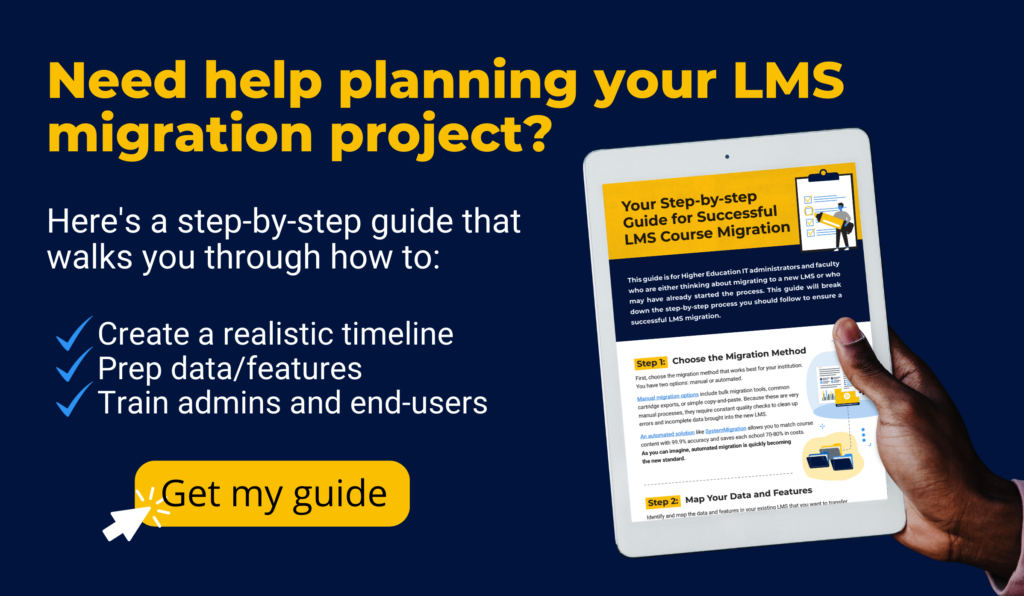LMS migration has become a 4 letter word in the higher education IT space. Some institutions will even hold onto their LMS longer than they’d like in order to avoid migrating to a new one.
The sort of LMS migration project that you’ve been through or have heard about is no longer necessary. You know, the one that either requires faculty and staff to copy and paste one course at a time or the one that uses a bulk migration tool that leaves the course content fragmented and incomplete.
Luckily, there’s a new way to transfer student records and course content–one that’s automated and transfers information accurately and efficiently.
So, let’s take a look at the top 4 common myths about LMS migration and debunk them one by one!
Myth #1: You have to leave custom developments behind or keep your legacy LMS
Many worry about losing their custom developments when migrating to a new platform. That data is too precious to risk.
With an automated migration solution like Scaffold Migration, you can get custom solutions that allow you to transfer everything you need, including:
- Quizzes and quiz banks,
- Vocab lists,
- Script tags,
- iFrame,
- LTI’s,
- And more.
Myth debunked!
Myth #2: Migration projects disrupt faculty and students
It’s true that if you opt for a manual migration method like bulk migration or common cartridge exports, it can take you at least six months, and in many cases, well over a year to finish your project. And indeed, it will disrupt faculty, and students as both groups will likely need to go back and forth between two different platforms.
Needless to say, this is confusing and frustrating for both faculty and students. As you know, a good online user experience is vital to re-enrollment and faculty satisfaction.
But, thankfully, an automated migration solution can transfer up to 6,000 courses per week to your new LMS. That means you can start and finish your project in just 90-120 days so that faculty and students don’t have to oscillate between two platforms. Myth debunked!
Myth #3: LMS migration is expensive
A manual migration project can definitely be expensive, costing an institution on average $100,000 per year. This isn’t even including the extra costs of hiring a white glove service provider to aid in transfer.
But, a solution like Scaffold lMS Migration can save your school up to 70-80% on migration costs. This way, you can spend more of your budget on the things that truly matter–like reinvesting it in your academic, technology, or operations departments. Myth debunked!
Myth # 4: LMS migration is cumbersome and messy
Manual methods require copying and pasting course content into the new platform, leaving you prone to human error. Many institutions will require their faculty and staff to do this task or hire a white glove service to help.
This many hands on the project can make it tough to manage, resulting in a cumbersome and messy process.
Another option is Scaffold LMS Migration. It uses state-of-the-art automation technology that allows you to one-to-one match your course content accurately.
No more copying and pasting. No more going back through courses to find mistakes. No more rebuilding courses one by one. It’s as easy as telling the K16 Solutions team what content you’d like to migrate and what data you’d like to archive. Myth debunked!
Debunking LMS migration project myths with Scaffold Migration
As you can tell, many of these myths have some truth to them, but you don’t have to be a victim to them.
A solution like Scaffold Migration is changing the way schools handle LMS migration projects. Take a look at some of our case studies to see what schools like yours have to say about working with K16 Solutions. Speak with one of our migration experts to find out how we can help your institution or schedule a free demo to see what course content will look like in your destination LMS.







